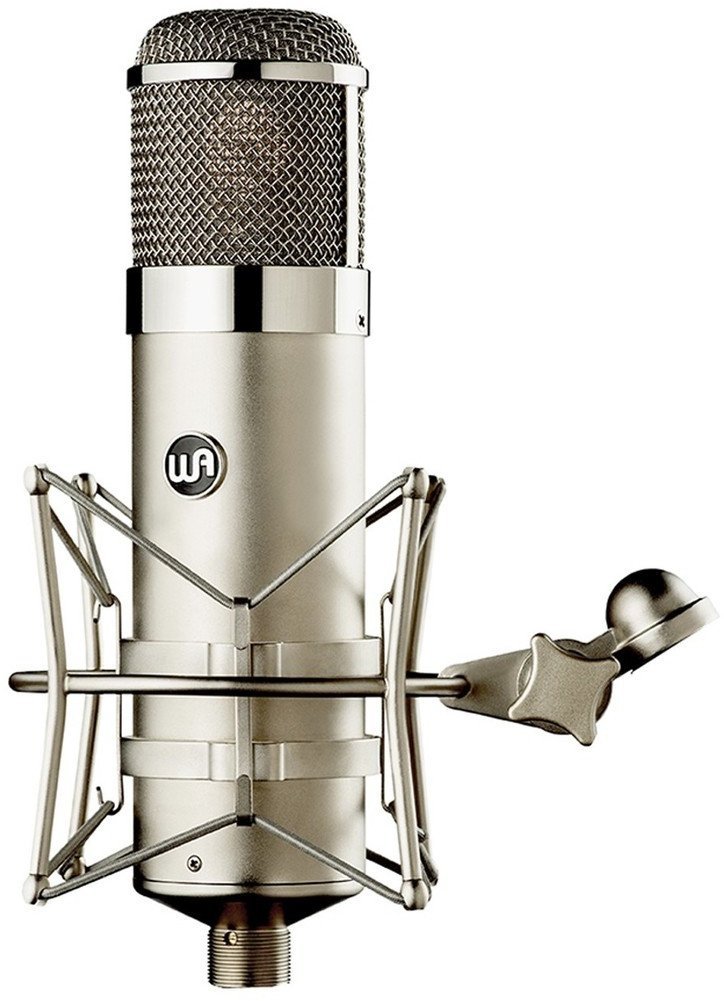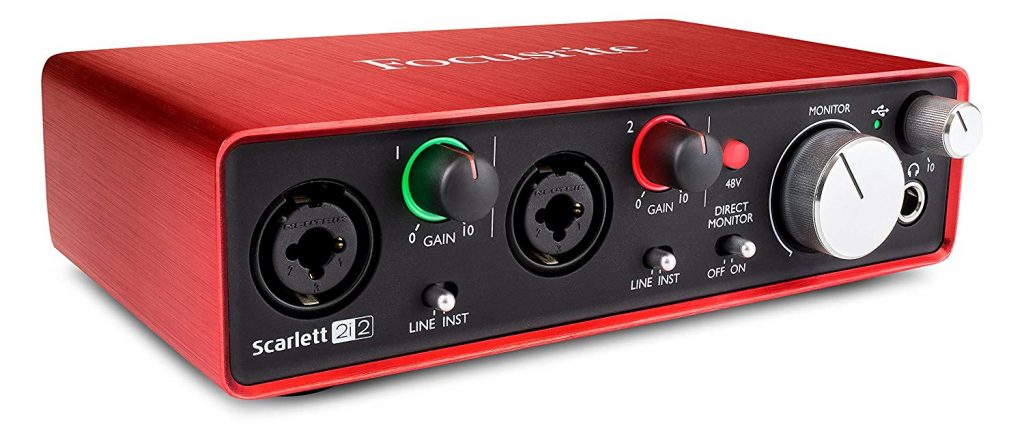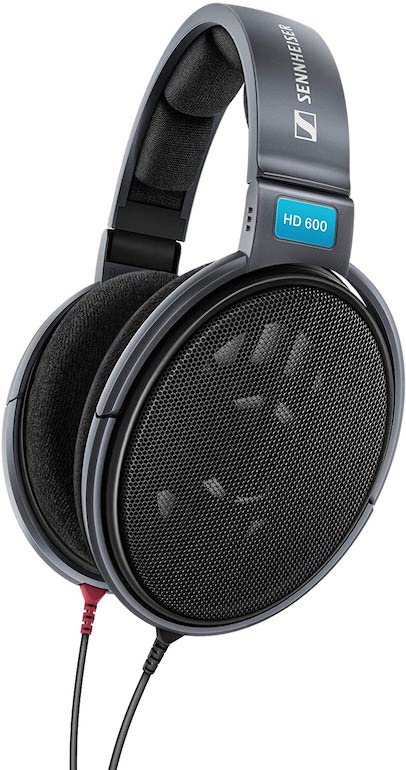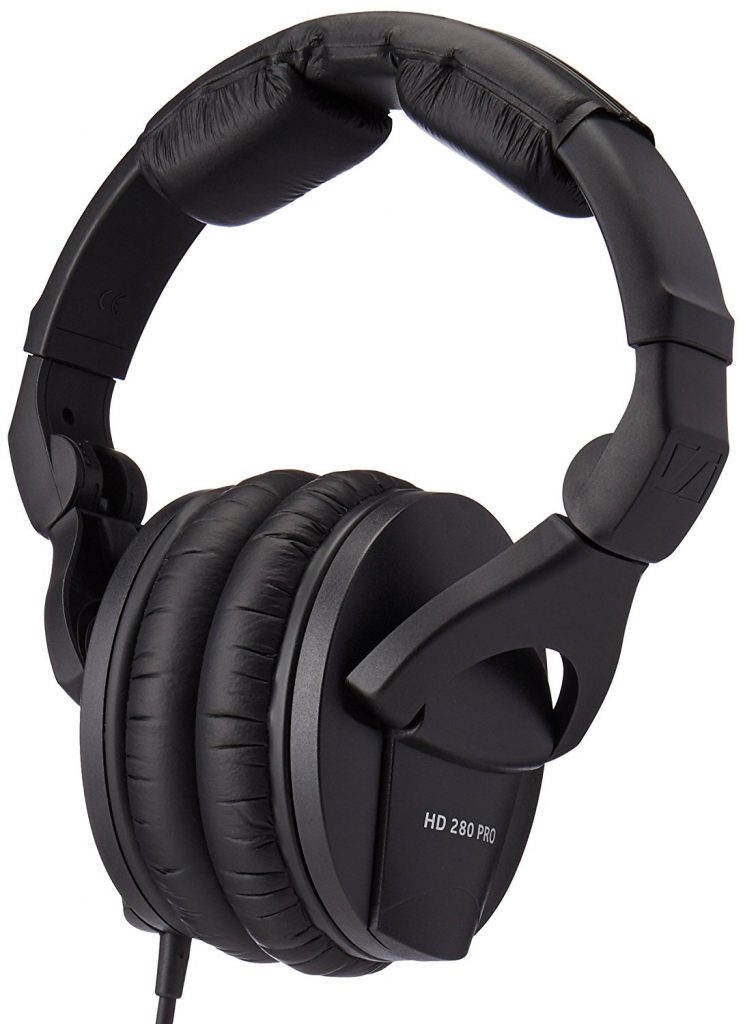Teenage Engineering Pocket Operator PO-33 KO
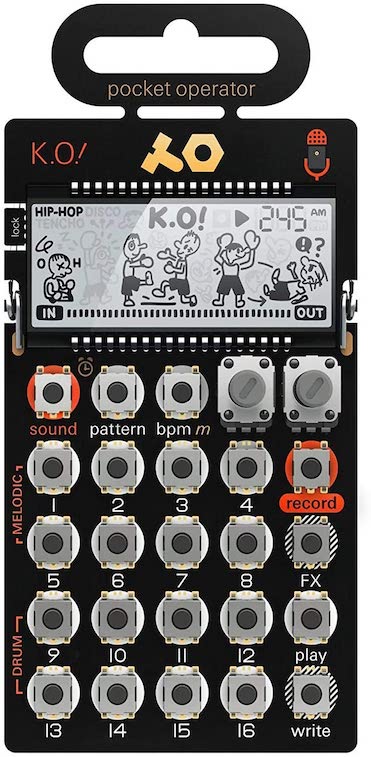
Teenage Engineering Pocket Operator PO-33 KO!
Since 2005, Teenage Engineering has been making a lot of noise in the synth world, quite literally. The unique approach they take to product and sound design could be described as somewhere between mad scientists and kids’ let loose in the toy store. But, don’t be fooled by the quirky and playful nature of their products, they make some serious hardware.
Teenage Engineering synths like the OP-1 can set you back well over $1000, but their Pocket Operator range is far more budget-friendly (see current price), which is excellent news for synth newbies. For this review, we take a look at the Teenage Engineering Pocket Operator PO-33 KO!, a unique micro sampler that punches above its weight.
What’s a Pocket Operator?
Before we get too far into it, let’s go over what a Pocket Operator is (besides something that resembles a calculator from the early 1990s). Pocket Operator models include a drum synth/sequencer, a vocal synth/sequencer, and a micro sampler.
As you may have guessed, they are pocket-sized, so the Pocket Operator’s primary appeal is the ability to make music on the go with ultimate convenience. Different models have different design themes, but essentially, they are all retro-styled, with a printed circuit board, mounted screen, and various buttons. At first sight, they might look a little flimsy, but any delicate components are safely housed behind the screen. There’s also a rubber Pro Case if you want it to feel a bit more substantial. Despite its small stature, the Pocket Operator comes with some surprising features, like a built-in microphone and speaker.
They might look like little toys, but they are legit noisemakers:
A Technical Knockout
As we mentioned, we are focusing on the PO-33 KO!, which looks to be their most popular model. The stripped-back design has 23 buttons and two pots: 16 sequence buttons and seven function buttons.
The PO-33 KO! has a total of 40 seconds of sampling time split between 16 slots. The first eight slots are melodic sample slots, and the next eight slots are for drum samples. Melodic sample slots are used to record one shot, single samples that can then be triggered to create melodic content. When you record a melodic sample, that sound can then be triggered chromatically across the 16 sample buttons. For example, if you record a short vocal stab, you can quickly create glitchy, pitch shifting phrases. Unfortunately, you can’t select specific scales as you can in other Pocket Operators, the PO-33 KO! is chromatic only.
Rhythmic Joy
Drum sample slots are more about rhythm and texture; they are used to record slightly longer samples/loops. Unlike the melodic samples, drum samples are sliced across the buttons. So, a single sample will be chopped into smaller sections that can be used to create new patterns. These slots don’t need to be used for drums or percussion; they are just best served for that. But, you can use them to chop up longer vocals, or anything else you like.
Together, the two slot banks allow you to create very cool beats, especially if you’re into techno, house, or hip hop.
Samples are recorded via the built-in microphone, and it’s possibly the quickest/easiest sampler you will ever use, the downside is the quality. Now, that’s not to say the quality is poor, not at all; it’s about perspective. The PO-33 KO! is 40 seconds of 8-bit monophonic sampling. It obviously won’t compete with an MPC Live (or similar), but an MPC also won’t fit in your pocket. And with the PO-33 KO! at under $100, it’s like comparing apples to oranges.
How To Record Using The Built-In Microphone
To record a sample, you hold the record button along with the number of the slot you wish to record on. As soon as you let go of either button, the recording stops. The recording process is quick and easy, although it becomes a bit less intuitive if you have to trigger a sound from an external device. For example, let’s say you are outside, and you want to sample the noise you get from hitting a glass bottle with a pen. Not the most creative, admittedly, but it’s something you could use as a nice click sound. In that scenario, you can’t hold the Pocket Operator, hold both buttons, and strike the bottle at the same time. You’d need to find somewhere to sit the PO-33 KO! down, hold the buttons with two fingers, and use your spare hand to trigger the external sound.
Every sound recorded has four adjustable parameters split between two pages on the screen and adjusted via pots A/B. Page one shows the filter type, being variable means its fully interchangeable between low-pass, high-pass, and band-pass modes, it also shows resonance control. Page two shows trim and length, which define the start and endpoints of each sample. Pressing the FX button once switches between pages one and two. Between the filter, resonance, and truncate options, you can record and shape sounds pretty well indeed.
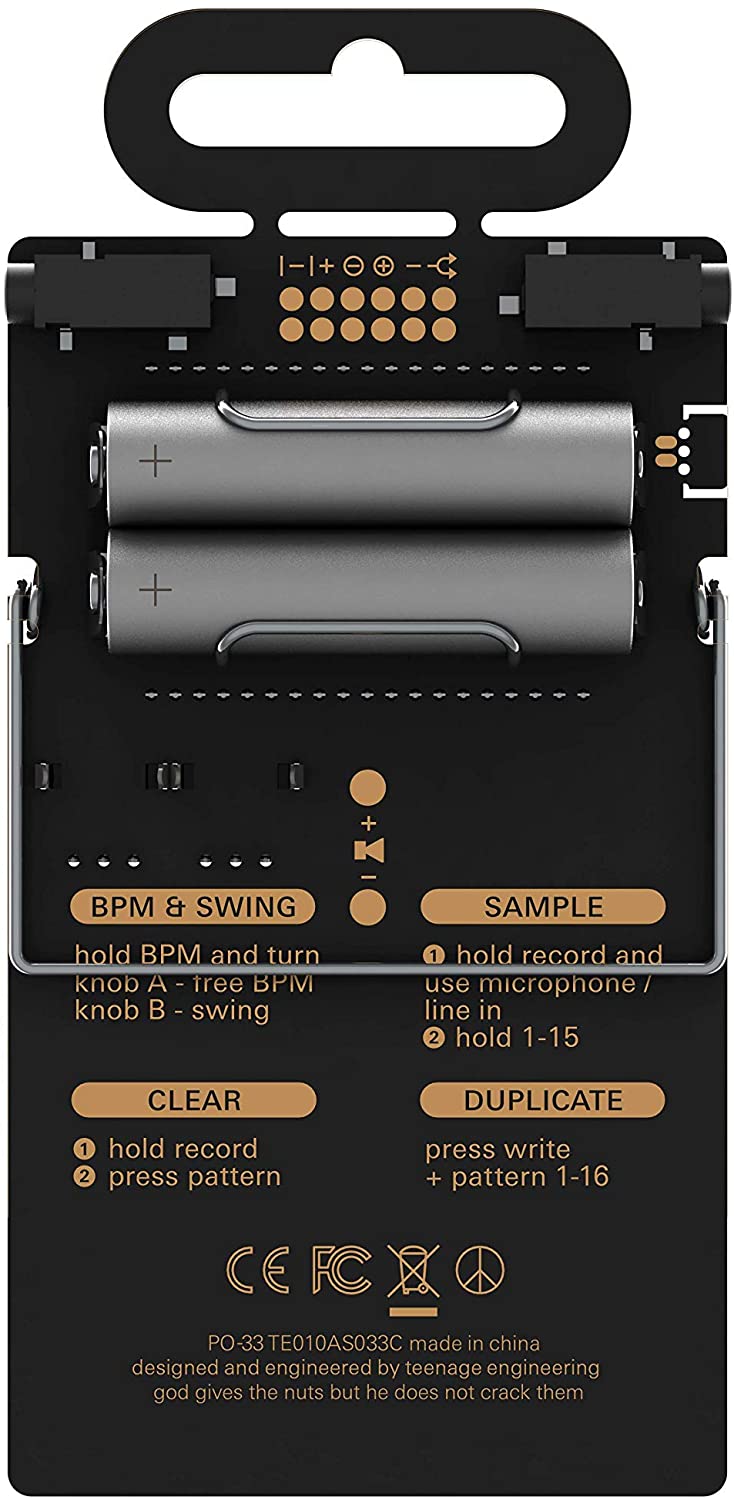
PO-33 KO: Sequencer
Along with the 16 sample slots, the PO-33 KO! has a built-in 16-step sequencer that lets you gel everything together. The sequencer is surprisingly powerful for something barely larger than a credit card. Like most sequencers, you can program in two ways, live or step. In step mode, you simply assign a sound to a particular step, live mode is triggering the sounds live while the sequence is looping. Modes are selected by using the write button; clicking it once activates step mode where buttons 1-16 represent each step in the sequence. Holding the write button and selecting a sound will trigger live mode, anything you play after that will be recorded.
The first surprising thing about the sequencer is that it can save 16 patterns. A pattern is basically one cycle of 16-steps that you save to one of 16 slots. This feature is important because you can chain patterns together to create longer sequences and potentially full songs. It’s not a surprising feature of a sequencer in general, but it’s fantastic at this price and size. If you have a pattern much longer than 16-steps, you can record in live mode across the entire length; pretty cool.
Tempo Controls
There are a couple of ways to set the tempo of your sequence, some quirkier than others. First of all, there are three pre-defined tempos shown on the screen; hip hop (80 bpm), disco (120bpm), and tencho (140 bpm) – no, that’s not a typo, it’s Teenage Engineering’s charming sense of humor. Adjusting the tempo range between 60 bpm and 200 bpm can be done by holding the bpm button and turning pot B. Pot A adjusts the swing of your sequence with 18 selectable settings. You can see already; it’s shaping up to be a more useful music-making tool than you might expect.
It’s possible to record parameter changes into your sequence, and quite easily, too. To record parameter changes, you need to be in live mode, then use pots A and B to adjust the corresponding parameters. The modified parameters are set using the FX button, which we will go into a little more in a bit.
If there is a downside to the sequencer, it’s that it has a 4-note max polyphony. That means no more than four samples can play at any one time, or on any single step. The max polyphony includes both melodic and drum samples, so if you add a fifth, you get some note stealing with the newest sample replacing the one that came before it.
Heavyweight FX
As you have seen, the 16 slot buttons are multi-functional, and when you press the FX button, each of the 16 becomes an FX type selector. Effect types include loop, octave up/down, stutter, reverse, scratch, and more. Individually, the effects aren’t spectacular, but the ease of use makes them extremely useful in this context.
The variable multimode filter with resonance control provides independent filter settings per channel/sound. So, you can have different timbral characteristics on the melodic and drum channels. The filter isn’t going to compare to something that you’d find on a high-end sequencer, but again, it’s all about perspective. The sound shaping options available with the PO-33 KO! are very impressive.
PO-33 KO: The Screen
There isn’t too much to say about the screen in all honesty. Aside from the two-parameter pages, it’s very basic. It displays the tempo, record/playback indicators, the time (in case sampling is keeping you late for work), A/B parameter levels, and a cartoonish boxing scene. If not much else, it’s a nod to the KO! name.
Features / Specs
- 16-Step Sequencer
- 8 Melodic Sample Slots & Drum Slots
- 16 Patterns and Effects
- Built-in Speaker
- Sampling Microphone
- 40 Seconds Sample Memory
- Parameter Locks
- 3.5mm Audio I/O
- Folding Stand
- Requires 2 AAA Batteries
- Weight: 0.2 lb
- Dimensions: 2.4 x 4.9 x 1.2″
Who’s It For?
It might sound a little cliche, but the PO-33 KO! is for absolutely everyone. As a beginner, a Pocket Operator is a way to get into making music without breaking the bank. It’s also the perfect introduction to sampling, so it’s a learning experience as well as a music-making tool..
It also offers enough quality to keep more advanced users entertained. If you are already well versed in sequencers and sampling, you can look at it in two ways. Firstly, it’s an easy way to record ideas anywhere before redoing it on your more advanced equipment. Secondly, it’s not uncommon for producers to want to make a sample sound worse, so even if you have high-end gear, the 8-bit sound might be what you want for a particular track.
PO-33 KO: Conclusion
The Teenage Engineering Pocket Operator PO-33 KO! is all about having fun. It’s like the Game Boy of samplers. We pointed out that it won’t match the quality of high-end samplers (there’s always someone who will expect $2000 results for $100). Nor is it a replacement for those devices. Realistically, quality isn’t a complaint; it delivers well beyond its price tag, and is meant to be lofi.
Overall, it’s an impressive little device that we highly recommend. It’s easy to use, offers something for musicians/producers of all levels, and it’s quite addictive. Anything that gets you hooked on experimenting with creativity and making more music is worth its weight in gold.
Here’s one more for the road:
What are your thoughts? Feel free to let us know in a comment below or reach us on our Twitter or our Instagram.



